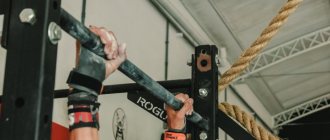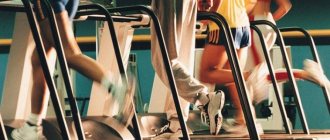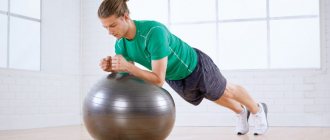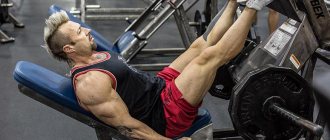In Indian culture, a lot of attention is paid to taking care of the body. Yoga is a whole science of the body that has no analogues in other cultures and strengthens a person both spiritually and physically. This is not just physical education, these are deeply thought-out exercises that allow you to achieve the ideal as quickly and efficiently as possible. Yoga for losing belly fat, strengthening muscles and relieving stress is now popular all over the world.
A separate advantage is that to practice yoga you do not need to go to the gym or buy equipment for your home. Take a mat that will soften the hardness of the floor a bit, choose a spot and get started.
Return to content
Is it possible to lose weight with yoga?
People who have been practicing yoga for a long time stand out from the crowd. They are slim, fit and especially fresh. It is enough to practice regularly for several weeks to start receiving compliments from others. Yoga makes all organs of the human body work better, triggering not only weight loss, but also improved well-being:
- Blood pressure and heart function are normalized;
- Sleep improves;
- Metabolism accelerates;
- Increases brain efficiency;
- Appetite decreases;
- The tendency to edema disappears;
- Muscles are strengthened;
- Energy and vigor appear.
Return to content
Yoga with health benefits
Three techniques have a positive effect on the abdominal cavity and digestion: uddiyana bandha (abdominal lock), agnisara dhauti kriya (kindling the internal fire) and nauli kriya (wave). The first two exercises will not cause difficulties even for beginners. The third one still requires some preparation, but most people can do it.
It is important to remember that any physical activity may have contraindications. Thus, the techniques listed above cannot be performed by women during pregnancy and menstruation, with endometriosis and other acute conditions in the pelvic organs, and with acute inflammatory conditions in the abdominal organs. Alexandra also advises doing exercises in the morning on an empty stomach or no earlier than four hours after eating.
Photo: istockphoto.com
Regular performance of these abdominal manipulations has a beneficial effect on various body systems. Reduced pressure in the chest increases the return of venous blood to the heart, which serves as an excellent prevention of varicose veins of the legs and pelvic organs. Blood circulation in these areas also improves and congestion is eliminated. The digestive organs are stimulated, intestinal motility develops, which helps get rid of constipation. In addition, exercises help keep the deep abdominal muscles, which are almost never used in everyday life, in tone, the expert explains.
Not just girls: 5 famous men who practice yoga
Contraindications
Hatha yoga requires concentration, stamina and strength. The loads here are not at all the same as those of athletes or wrestlers, but they are there, and not small. Therefore, such activities also have contraindications:
- Serious diseases of the nervous system;
- Period of exacerbation of any diseases of internal organs;
- Pneumonia;
- Tuberculosis;
- Heart diseases;
- Any stage of cancer;
- Damage to the spine or joints.
If you decide to start practicing yoga, be sure to consult your doctor and make sure you are not putting your health at risk.
Yoga helps to cope with many ailments, but it can only be practiced during periods when there are no exacerbations and the condition is stable.
Return to content
Yoga for the Abdomen - Introduction
You probably already know that losing belly fat is quite difficult. The last centimeters of fat before the desired flat tummy are especially difficult. Exercise combined with proper nutrition can restore a toned figure, but it may take a long time. If you want to get results faster, you need to approach losing belly fat with yoga wisely, additionally including breathing exercises in your daily program.
One day I started doing one breathing exercise before going to bed and the next morning I felt an unusual lightness in my body. This was repeated for several days, and I noticed that the fat on my sides and stomach suddenly began to disappear sharply. Such an amazing effect of just one breathing exercise on my body aroused great interest in me. I started looking for information on the Internet and discovered that I was far from the first person to encounter this effect. Moreover, there are entire weight loss systems based on breathing techniques. But I can say from my personal experience that breathing is not everything, for a truly powerful effect you also need to change your lifestyle. Yes, yes, add physical activity, cleansing procedures and adjust your diet. Nothing new, this is all really important. But little has been written about breathing and asanas. I will talk about them in this article.
I want to warn you right away that I am not a doctor and this article describes only techniques that actually work on me. I cannot explain how they work from a medical point of view. If you have any medical conditions, you should consult your doctor before practicing yoga.
So, what is the magic yoga breathing exercise that can quickly bring back a flat stomach? We will return to this later, since we need to start with the basics of yoga, namely asanas.
You may be doing regular cardio exercise and eating a healthy low-carb, high-protein diet, but find that something is missing in your life. Regular yoga practice is not only a relaxing way to build a stronger connection between your mind and body, but also a way to get a flatter and stronger belly. To tone your belly, focus on poses that stimulate your abdominal muscles, forcing you to maintain balance.
Rules for performing yoga for losing weight on the stomach and sides
Since yoga is a science and not just burning fat, it has many rules and nuances. To get the maximum result, you should adhere to them.
- Don't overload yourself. Get used to the exercises gradually. Start with a few minutes a day and gradually increase the load.
- Always exercise on a mat, not the floor.
- Set a routine and follow it strictly. Don't miss classes unless your health requires it.
- Exercise outdoors or in a well-ventilated area.
- Each exercise should be repeated 3-4 times during a workout.
- Start your session with a short warm-up to prepare your body.
- It is best to practice in the morning on an empty stomach. If this is not possible, let at least 2 hours pass after eating.
- Don't ask yourself whether the results of your training are visible in the first 4 weeks. It is there, but it grows gradually and this can only knock down your determination. After 4 weeks you won’t recognize yourself, but in the meantime, be patient.
- Try to eat healthy. More fresh vegetables and fruits rich in fiber, less sweets and smoked foods.
- Drink water. This is an inevitable rule of good health: at least 1.5 liters of water per day to prevent dehydration.
Yoga includes a huge number of asanas, each of which has its own purpose. Here are those that will help make your figure slim:
- Dog pose;
- Half Moon Pose;
- Rest pose;
- Camel Pose;
- Boat Pose;
- Half a boat;
- Cobra pose;
- Warrior pose;
- Tilt towards the feet
These are the yoga poses for losing weight on the stomach and sides, and we will dwell on them in more detail.
Return to content
Poses for a flat stomach and narrow waist
Practice yoga 20 minutes a day 4 times a week. To perform the exercises you will need a mat or mat.
Use ujjayi breathing during your workout to get the most out of each asana for weight loss. Breathe exclusively through your nose. Keep your tongue raised towards the palate, its tip behind your upper teeth. You should be aware of your breathing and try to breathe this way throughout your workout to warm up your body, clear your mind, and protect your back. These eight yoga asanas will help you get your waistline back into shape.
Glute bridge | 8 breaths
This pose will help warm up the body and also strengthen the abdominal and lower back muscles.
- Lie on your back, bend your knees and place them on the floor shoulder-width apart. Place your hands behind your head, extend them, palms facing up. Tighten your abdominal muscles.
- As you inhale, lift your hips up into bridge pose. At the same time, place your arms at your sides, focusing on the palms of your hands. Pause for a moment at this point and tighten your buttocks and lower abdominal muscles. As you exhale, slowly lower your pelvis down and return your hands behind your head.
- Perform 5 repetitions, not forgetting about proper breathing. Finish the exercise by tucking your legs toward your chest to relax your back.
Prone Twists | 10 inhalations/exhalations, alternating sides
This pose will help warm up your back and strengthen your obliques.
- Lie on the mat, lift your legs up and bend your knees so that your shins are parallel to the floor. Place your hands on the floor near your head, bending your elbows at a right angle. Tighten your core by drawing your belly button in toward your spine until your back touches the floor.
- Keeping your knees bent at a 90-degree angle, lower them to the floor as you exhale, keeping them suspended. The shoulders should remain motionless and the abdominal area should be pulled in. As you inhale, return your legs to the starting position. As you exhale, lower your legs to the left side without touching the mat.
- As you inhale, bring your legs back to the center. Do 5 twists in each direction and finish the exercise by tucking your legs toward your chest to relax your back muscles.
Boat Pose | 10 breaths
This asana strengthens the core muscles, or rather tones the muscles for a flat stomach and beautiful back, and trains the hip flexors.
- Sit on the floor. Bend your knees, keep them together and place them on the ground. Grab your hips with your hands and pull them towards your chest. Lift your heels off the floor, keep your chest lifted and core tight. Hold this position for a few seconds, point your toes forward and return to the starting position.
- You should feel your abdominal muscles working. This exercise is great for eliminating a sagging belly. To make the exercise more challenging, try to keep your toes pointed as you lift your legs.
Cat-cow pose | 10 breaths
This pose warms up the spine, back and abdominal muscles, and also makes them stronger.
- Stand in the “table” position, that is, on your knees and hands. Place your hands directly under your shoulders.
- As you inhale, take a “cow” pose, lowering your stomach to the floor and lifting your tailbone up. Squeeze your shoulder blades together, stretch your neck and look at the tip of your nose.
- As you exhale, assume a cat pose, rounding your back and pulling your chin toward your chest. Focusing on your palms, try to see your navel. Hold this pose to feel your rhomboid muscles relax. Pull your belly button in to engage your abdominal muscles.
- Continue alternating poses for 10 inhalations and exhalations. Return to the starting position.
High bar | 5 inhalations and exhalations
This pose strengthens the abdominal muscles, back, shoulders, buttocks and thighs.
- Start the exercise in table pose on your knees and palms. Then get into a plank position. The emphasis should be on the palms and wrists and toes.
- Focusing on your palms, squeeze your shoulder blades together and tighten the muscles of your buttocks and abdomen. Hold the position for 5 seconds.
Tip: If you feel that your lower back is sagging towards the floor and it is difficult for you to support your body, place your knees on the floor. Try to keep your shoulders in line with your hips, which will further work your abdominal muscles.
Chair Pose | 8 breaths
This pose strengthens the abdominal muscles, thighs, buttocks and back.
- Stand straight with your feet together so that your big toes touch. Leave a small gap between your heels.
- Exhale and squat as if sitting on a chair. Raise your arms up, spread your fingers to the sides. Bring your thighs together and tighten your lower abdomen, keeping your body weight on your heels. Tighten your buttock muscles and try to keep your back straight. Hold the position for 8 breaths, then return to the starting position.
Option 1: If it is difficult to raise and hold your arms up, then simply hold them in front of you with your palms facing down.
Option 2: If there is pain in the lower back, then your feet should be shoulder-width apart.
Your knees and big toes should be in line.
Camel Pose
Ushtrasana is a pose that helps strengthen the torso muscles. With regular practice, it makes the spine flexible and strengthens the respiratory organs. It is often recommended for people prone to colds or with weak lungs.
Lay down a small rug. Sit on your knees, hands on your hips. From this position, lift your pelvis while continuing to lean on your knees. Arch your back, stretch your head and hands toward your heels.
If you have just started doing yoga and find it difficult, you can place your hands behind your back one at a time. When executed perfectly, they move in parallel.
Return to content
Boat pose
Paripurna Navasana perfectly loads the abdominal and leg muscles.
Sit on the mat with your legs straight in front of you. Lean your torso back while raising your legs. Balance with your heels and head at the same height. Your arms should be extended forward.
Beginners can make the task easier by raising their legs slightly bent. However, you need to strive to improve stretching and perform the asana fully.
Pros perform the exercise by spreading their arms to the sides, increasing the load on the abdominal muscles.
Return to content
Wave (nauli kriya)
How to do.
Get into fisherman's pose and perform an abdominal lock as described in the first exercise. Without breaking the breath hold, tense only the rectus abdominis muscles, keeping the oblique muscles relaxed. At the mastering stage, press firmly with your hands on your hips. As a result, the so-called median tourniquet, that is, both rectus muscles, should come forward. To exit the exercise, return to uddiyana bandha, release your stomach, and then inhale smoothly.
Photo: istockphoto.com
Expert opinion:
This technique is more complex than the previous two, so you can move on to it only after completely mastering uddiyana bandha and agnisara dhauti kriya. After mastering control over the rectus abdominis muscles, you can learn to move the tourniquet to the left or right, alternately shifting your body weight to one side or the other. The final stage of mastering consists of rotating the tourniquet in a circle, in one direction and the other. We always complete the cycle by rotating from right to left. During rotation, the pelvis remains motionless.
Half a boat
Ardha Navasana is a variation of the previous asana.
When performing it, you also tilt your body from a sitting position and raise your legs, balancing on your buttocks. But in this asana, the hands should be behind the head, which slightly changes the load. The legs are raised approximately forty degrees relative to the floor.
Return to content
Dog pose
Adho Mukha Svanasana helps strengthen the muscles of the legs and abs.
Get on all fours with your back straight. As you exhale, straighten your legs, resting on your palms and feet.
Beginners can stop here. Pros perform back bends.
Then you should exit the pose correctly. Place your feet close to your hands and straighten up, inhaling and raising your arms up. Lower them and exhale.
To lose weight, you can drink apple or wine vinegar, which have a burning effect on fats in the human body -.
You can arrange a fasting day on cottage cheese for weight loss. This diet also helps you lose weight. Most importantly, it does not exhaust the body by starvation.
Here we describe a diet option for losing weight by 10 kg. Among them is the buckwheat diet.
Return to content
Pavamuktasana (Wind Release Pose)
This asana helps in combating various gastric problems including indigestion and constipation.
How to do
Lie in a supine position (face up) with your arms next to your body, legs extended straight, and heels touching each other. Bend your knees. Take a deep breath, and as you exhale, gradually bring your bent knees to your chest, pressing your hips into your stomach. Keep your knees together while pressing your hands onto your thighs. Inhale again, and as you exhale, lift your head, this will allow your chin to touch your knees.
Hold the position for 60 to 90 seconds, while breathing deeply. Exhale slowly and release your knees, allowing your head to rest on the floor. Bring your arms to either side of your body, palms on the ground.
Relax in Shavasana. Repeat the asana 7 to 10 times, with a 15-second interval between repetitions.
Benefits
Strengthens the back and abdominal muscles. Helps in digestion and release of gas. Tones the muscles of the legs and arms.
Contraindications
Pregnant women, people suffering from spinal problems, people with high blood pressure and heart problems should refrain from performing this pose.
Cobra pose
Bhujangasana works on the stabilizing muscles of the torso and abs, affects posture and waist. It makes the spine more flexible and has a beneficial effect on the organs of the digestive system.
Lie face down on the mat, place your hands on your palms at chest level. Elbows pressed to the body.
Smoothly straighten your arms, arching your back and without lifting your hips from the floor.
In this position, the stomach should be pulled in and the shoulders should be apart.
Slowly return to the first position, tensing your buttocks and legs.
Return to content
Tadasana (Mountain Pose)
Tadasna is an ideal warm-up pose. Improves blood circulation, ensuring the body is ready for practice.
How to do
Stand tall with your legs straight, heels slightly apart and your big toes remaining in contact with each other. Keep your spine straight, arms on both sides with palms closer to your body. Extend your arms forward and bring your palms close to each other.
Inhaling deeply, stretch your spine. Raise your folded arms above your head and stretch as far as you can. Try standing up on your tiptoes, looking up at the ceiling. If you can't stand on your toes, lower your heels to the floor and lift your face towards the ceiling. Breathe normally and hold the pose for 20 to 30 seconds.
Inhale deeply, and as you exhale, slowly relax and lower your feet to the floor.
Repeat the asana 10 times, gradually increasing the time spent in the pose. Rest 10 seconds before attempting the next rep.
Benefit
Improves posture, the shape of the abdomen and buttocks. Strengthens hips, knees and ankles.
Relieves sciatica (pain that affects the back, hips and outer legs).
Contraindications
People suffering from low blood pressure, insomnia, headaches are not recommended to perform this pose.
Warrior Pose
Virabhadrasana specializes in the muscles of the back and waist, and also strengthens the legs. There are two varieties of this asana.
- Virabhadrasana 1. Stand straight on the mat with your feet wide apart. Place your palms together above your head. Then bend one knee while keeping your weight on that leg. Turn your body in the direction of travel. Stay in this position for a while, then straighten up.
- Virabhadrasana 2. Stand on the mat with your feet wide apart. One leg is straight, the other is bent at a right angle. Turn your head in the direction of the tilt, spread your arms to the sides, parallel to the ground. Stand in this position for a minute, pulling in your stomach and straightening your back.
In both types, this asana must be performed twice - bending the legs in turn.
Pros perform Virabhadrasana, leaning on one leg, raising the other to the chest, then moving the leg back and bending the torso forward. Your arms can be extended to the sides, or pressed against your body. This makes the muscles work more intensely and improves balance.
Return to content
Oh my God, the abs!
There is more than one formula for achieving a flat tummy. But since few people actually enjoy traditional ab exercises, the best way to achieve a sexy abs is to engage your abs more in workouts you already know and love.
Yoga not only helps you develop flexibility and release stress (which research shows can help you lose belly fat), but it also develops your abdominal muscles more functionally and effectively than most crunching exercises. Read this article and discover 11 yoga exercises for abs that will flatten your tummy and help you find peace of mind.
Tree pose
This pose will work your abs to maintain balance while standing on one leg.
Shift your weight to your left leg. Bring your right knee toward your chest, grab your ankle, and place the heel of your right foot on your left thigh. If you have trouble keeping your balance, keep your hand on your ankle while it rests on your thigh. If you can balance easily, place your palms together in front of your chest. Press your stomach to your back, but so that you can breathe freely. Find a point and focus your gaze on it while you hold the pose for 10 long, deep breaths. Repeat for the other leg.
Warrior: Twisted Lunge
In this abdominal yoga exercise, your abs will be engaged to help you maintain balance, and the twist will engage the difficult to tone obliques.
Place your hands together as if in prayer. Lunge forward with your left leg, bend your knee to 90 degrees, and keep your back leg straight. Tighten your stomach and rotate your upper torso to the left. Keep your back straight as you lean over your left leg, pressing your elbow to the outside of your left leg. Turn your head and look up over your left shoulder. Hold the position for 10 long, deep breaths, then turn straight around and return to a standing position. Repeat for the other side.
Rock and roll lotus
This fun and functional yoga exercise for weight loss will strengthen your core, using it to “stop” your body (just like you do in everyday life).
Sit with your legs crossed at the ankles. Grab the outside of your ankle with your opposite hand and lift your feet off the floor, balancing on your butt. Suck your stomach in and take a deep breath. As you exhale, begin to roll onto your back. Continue until your shoulder blades touch the floor, lifting your hips and still holding your ankles. Also drawing in your stomach, roll back to a sitting position, again balancing on your buttocks. This is one repetition. Repeat 10 times.
Imagine using your abs as a brake to stop at the top and bottom of the movement.
Variation of the Downward Facing Dog pose
This version of Downward-Facing Dog will make your abs burn, both during the hold and during the transition.
Start in Downward Facing Dog. Extend your left leg up toward the ceiling, pointing your toes. Shift your weight forward and lower your hips into a plank position, but instead of lowering your left leg, bend your left knee so that it is at your chest, drawing your stomach in throughout the exercise. Push your hips back and straighten your left leg, returning to Downward-Facing Dog. Repeat 10 times for the left leg. Then 10 times for the right one.
If it's too difficult, move from Downward Dog to Plank until you feel ready to add leg movement.
Warrior III
This is another pose that will force your core to tense the entire time to maintain balance.
Shift your weight to your right leg. Raise your left leg toward your chest, then extend it back so that it is parallel to the floor. Tighten your left foot so that your toes point toward the floor. Dip your fingers down to maintain your balance, if necessary. Extend your arms forward so that your body forms a straight line, starting from your fingertips, through your back, and ending with your left heel. Hold this position for 3 long, deep breaths, then slowly return to a standing position. Repeat for the second side.
Bend your supporting knee as needed to maintain balance, aiming to eventually fully straighten the leg you're leaning on.
Camel deflection
This active abdominal yoga pose works your abdominal muscles, thighs, and back.
Kneel with your knees shoulder-width apart and your toes on the floor. Extend your arms straight out in front of you, palms down. Raise your chest and push your pelvis forward as you backbend, slightly arching your lower back. Stop and focus on opening your chest, without exposing it, and remember to draw in your stomach. Slowly return to the starting position. This is one repetition. Repeat 10 times.
Leg swing bridge
This energizing pose will shape your glutes and strengthen your knee tendons, while using your abs for balance and control of your leg movements.
Lie on the floor, knees bent, feet flat on the floor. Extend your arms to the sides of your body, palms down. Brace your abs and assume a bridge position, lifting your hips off the floor. Keeping your hips lifted and angled, extend your left leg up toward the ceiling, keeping your foot tight. Swing your leg to the right, crossing the center of your body, then to the left, slightly beyond your left hip. This is one repetition. Repeat 10 times (forward, backward) with your left leg, then switch legs and repeat 10 more times before lowering to the floor from the bridge position.
Try not to let your hips drop as you move your leg, using your abs and glutes to keep your pelvis lifted and angled. Small, controlled movements are better than large, but executed incorrectly.
Extended Boat Pose
Build core strength and endurance with this challenging yet effective yoga pose for belly fat loss.
Sit down with your legs straight in front of you. Place your hands behind your hips, back straight, lean back slightly and raise your legs, keeping your stomach pulled in throughout the exercise. Hands by your sides, at hip level. Lower your legs 45 degrees so that your body forms a wide V. Hold this position for 10 long, deep breaths (or 60 seconds).
Too difficult? Make it easier by bending your knees at a 90-degree angle so your shins are parallel to the floor.
Folding table
This active pose uses the abs to move the body forward and backward, lifting and lowering the torso, providing a dynamic stretch and engaging the abs and back.
Sit with your knees bent and your feet on the floor shoulder-width apart. Place your hands behind your hips with your fingers slightly turned toward your body. Support yourself on your hands and lift your hips into a table top position as shown in the photo.
Then tighten your abdominal muscles and straighten your legs, pushing your hips back so that your pelvis is slightly behind them (without touching the floor), and your feet are tense. Hold for a count of 1, drawing in your stomach while in this position. Return to tabletop position. This is one repetition. Repeat 10 times.
If it's too difficult, try lowering your hips to the floor instead of moving them back to start.
Hip Raise in Lotus Pose
Don't be fooled by the apparent simplicity of this pose. Static tension means your core doesn't get a break!
Sit cross-legged (or in lotus position, if you can), with your palms on the floor on the outer thighs. Tighten your stomach and push through your arms and shoulders, lifting your hips a few inches off the floor. Hold for three counts, then lower.
If you can't lift your hips off the floor the first time, just push your hands and hips and lift yourself as high as you can until you get stronger.
Side plank with hold
Use your abdominal muscles to maintain your balance while balancing on one arm and one leg.
Lie on your right side, legs straight. Place your right hand under your right shoulder. Lift your hips off the floor until your body forms a straight line from your ankles to your shoulders. Tighten your feet and extend your left arm up toward the ceiling. Breathe deeply while doing this exercise. Hold this position for 60 seconds. Lower and repeat on the other side.
If it's too difficult, bend one (support) or both knees towards the floor to reduce the amount of weight you need to lift.
Rest pose
Savasana is the ideal asana to end your workout. Lie on your back on the mat and thoughtfully relax every muscle in your body. Lie like this for a few minutes.
This set of exercises should be performed every day, preferably twice a day. After the first visits, it may seem that this is not reflected in anything. But after a few weeks of regular training, you will begin to notice how your body is transformed. Pleasant music and slow flowing asanas for weight loss will allow you to get your figure into the desired shape without stress.
Return to content
Yoga exercises and poses for weight loss
Yoga does not burn fat like running. It acts by accelerating the metabolism, slowly and delicately. You need to perform asanas correctly and practice breathing exercises, which are also given great attention in Indian culture.
There is a special word for breathing - pranayama. The main thing in the art of breathing correctly is to do it deeply and use all the capacity of the lungs. Here's how to learn it:
- Take a comfortable position on the mat. You can lie on your back or sit with your back straight.
- Pull your stomach in and tighten your abdominal muscles.
- Push the air out of the bottom of your lungs using your abdominal muscles and diaphragm.
- Relax your stomach.
- Slowly inhale as much air as possible. First, the stomach inflates, then the chest expands, then a little more air is placed under the collarbones.
- Hold your breath.
- Exhale, emptying your lungs first in the area of the collarbones, then the ribs, then the abdomen. Exhale all the air to the maximum.
- Hold your breath.
- Inhale again according to the described pattern.
Pranayama is an important component of yoga for the waist and abdomen. After all, all these muscles must get used to participating in the breathing process and work constantly.
Do these exercises as often as possible. When you perform asanas or go about your business, always try to breathe this way. At first it is strange, then you get used to it and it becomes the most comfortable way of breathing. Because it is most beneficial for the body to breathe this way.
Having learned to breathe, we move on to asanas that will help you become slimmer. Don't forget about the pranayama skills you just learned.
Return to content
Kindling the inner fire (agnisara dhauti kriya)
How to do.
Take a fisherman's pose and perform the abdominal lock from the first exercise. Without breaking the breath hold, release your relaxed, soft belly forward, and then pull it back under your ribs. Release and draw in your belly several times during one breath hold. To exit the exercise, first release your stomach and then take a smooth breath.
Photo: istockphoto.com
Expert opinion:
This technique got its name due to its positive effect on the stomach and digestive system. At the development stage, you need to perform three cycles. Further, the number of repetitions can be increased depending on the sensations and well-being.
Yoga in motion: everything a beginner needs to know about energy practices
Vasisthasana
Lie on your side with your torso and legs extended in one line. Place your lower arm at your shoulder and straighten it, raising your body straight with emphasis on one foot. The hips also come off. The top arm should be extended upward.
Freeze in this position, then lower yourself onto the mat and repeat on the other side.
Pros can make the asana more difficult by lifting the top leg while holding the foot with the hand.
This asana intensively strengthens stabilizer muscles and has a beneficial effect on the functioning of internal organs.
Return to content
Bhujangasana
The starting position is the same as in Shalabhasana, but place your hands on the floor. As you inhale, straighten your arms, lifting your body. At the same time, the hips lie, the back bends.
This asana develops flexibility of the spine, strengthens the muscles of the arms, abs and back.
Perform asanas in a complex manner, without haste, to pleasant music. Do a couple of sets every day and don't allow yourself to take breaks. Yoga for the abs and waist is one of the most effective ways to achieve your desired goal. But only subject to discipline and regular exercise.
Return to content











